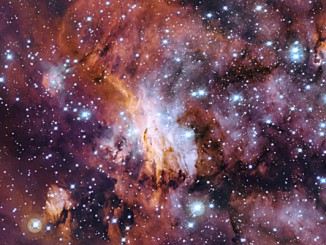The galaxy NGC 2525 is located 70 million light years from Earth in the southern constellation Puppis. At some point dating back to the age of the dinosaurs on Earth, a star exploded in a supernova, releasing torrents of radiation. The light from the blast we detected by the Hubble Space Telescope in January 2018 as part of an investigation to refine the expansion rate of the universe. Supernovae can be used as cosmic yardsticks to help determine the distance to their host galaxies.

Acknowledgment: Mahdi Zamani
A closeup view shows the supernova, known as SN2018gv, in context:

Acknowledgment: Mahdi Zamani
A time lapse movie based on Hubble data shows the doomed star’s fading afterglow (credit: ESA/Hubble, Digitized Sky Survey, L. Calçada, Nick Risinger (skysurvey.org). Music: Astral Electronic):



